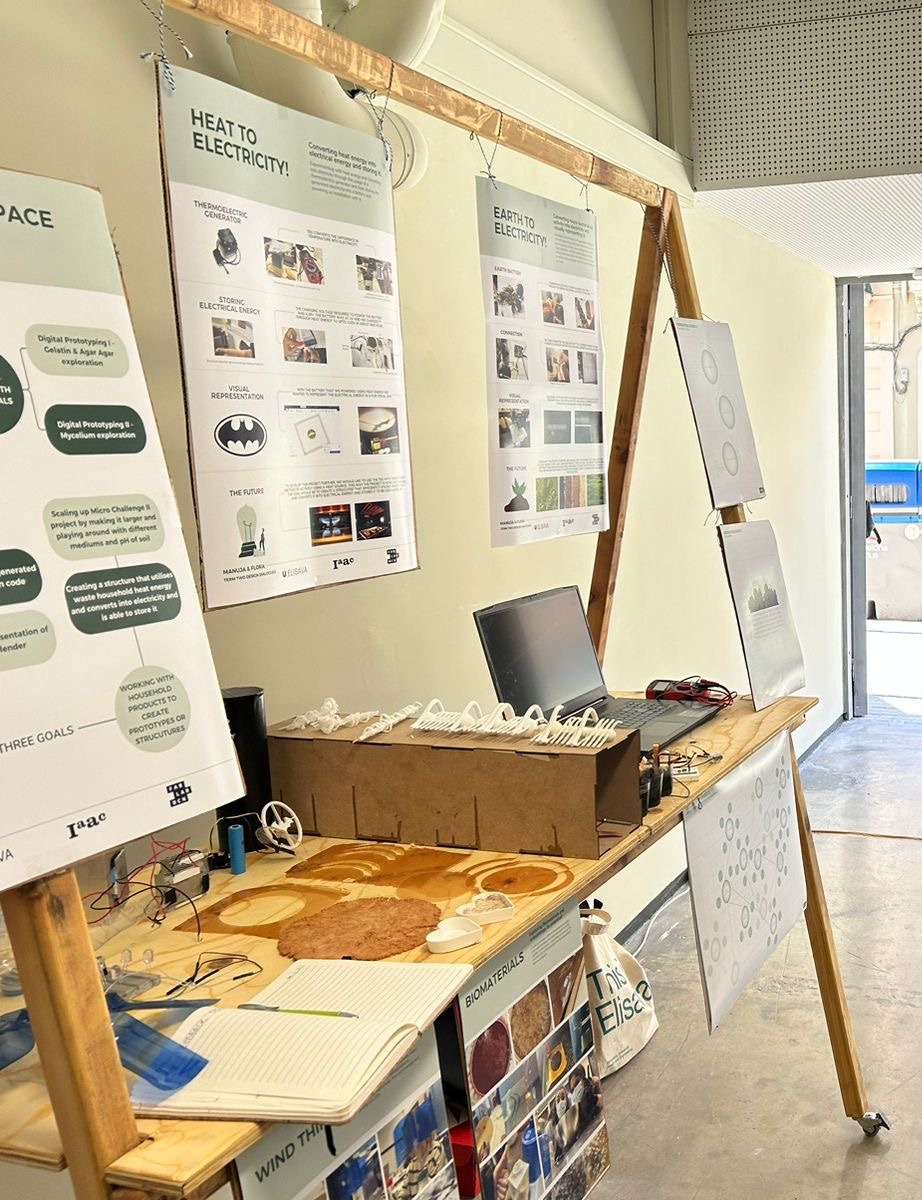

My reflection on the interactions I had during Design Dialogues
I anticipated some concern regarding the project I presented. While I acknowledge that from a technical standpoint, this passive method of generating energy may not be the most efficient, I find it to be an intriguing alternative worth exploring.
In a conversation with a friend, we exchanged on low-energy powering systems, such as soil batteries and salt batteries, pondering how our economic framework and investment decisions significantly influence the trajectory of energy development. We contemplated the dominance of certain energy sources, like fossil fuels, due to historical investment patterns and infrastructure. However, we also recognised the potential for transformative change through increased investment in alternative energy technologies. For instance, we discussed the evolution of solar panels, noting that initial low energy output could be overcome through research and innovation, leading to greater efficiency. We speculated on the possibilities of directing more resources towards these alternative systems, envisioning the development of self-regenerative technologies in harmony with our ecosystem. While acknowledging the complexity of the issue and the multitude of factors at play, we found the prospect of advancing such sustainable energy solutions both feasible and promising.
During my exhibition showcasing the soil battery, I had the opportunity to engage with numerous professionals and engineers. Our discussions went into various untapped alternative energy sources, with a notable focus on respecting the often-overlooked invisible actors in these processes, such as bacteria, microorganisms, and insects. Rather than solely optimising energy sources, there was a shared interest in developing protocols to learn how to utilise this 'alive' energy with respect, should these alternative energy sources become mainstream. Examples included harnessing compost heat for energy production, utilizing salt batteries, and extracting energy from algae in swamps. It became evident through these conversations that such alternative energy sources are gaining significance, particularly in light of the escalating climate crisis. This observation underscores the growing recognition of the importance of not only diversifying our energy portfolio but also acknowledging and working in harmony with the intricate ecological processes involved. Exploring innovative solutions that respect and harness the potential of these invisible actors is paramount to mitigating environmental challenges and fostering sustainability


In the search of Ancient Knowledge:
The concept of soil batteries, as we understand them today, involves harnessing the electrical potential generated by microbial activity in soil. While there isn't direct evidence of ancient civilizations utilizing soil batteries in the same way as contemporary technology, there are historical practices that inadvertently involved similar principles.
Ancient agricultural practices, such as using compost and organic matter to improve soil fertility, might have indirectly leveraged microbial activity in the soil. Microorganisms break down organic matter, releasing nutrients and generating small amounts of electrical energy in the process. While ancient farmers may not have been aware of the electrical potential of soil microbes, they understood the benefits of enriching soil with organic materials.
Additionally, certain ancient civilizations, such as the Mesopotamians, Egyptians, and Chinese, used clay pots as storage vessels for water and other liquids. It's conceivable that the moisture and minerals present in the soil surrounding these clay pots could have facilitated some level of electrochemical activity, akin to the principles behind modern soil batteries. However, there is no direct evidence to suggest that ancient civilizations intentionally used soil batteries for energy storage or other purposes.


Project : reading the current and voltage of the soil battery
In our project, we aimed to utilize microorganisms, particularly bacteria, in soil to conduct electricity, tapping into natural electrochemical reactions to generate electrical energy. The concept is straightforward: the soil battery serves as the input, with the intelligence of both bacteria and artificial intelligence acting as the processing element, and the output being a visual 3D printed model representing data fluctuations of current and voltage within the soil's microorganisms.
Our experimentation revealed several factors influencing the conductivity of electricity in soil batteries, including soil composition, moisture content, temperature, density, compaction, and electrode placement. Initially, we used store-bought soil with varying moisture levels to observe conductivity fluctuations, finding that increased moisture enhanced conductivity efficiency.
With the objective of utilizing intelligence to process inputs into physical outputs, we explored different options incorporating AI and microorganism intelligence. Ultimately, we focused on using voltage, current, and noise fluctuations from soil batteries to examine microorganism communication. We constructed a series circuit with 16 insulated cups of soil connected by copper wires and nails, yielding a stable voltage of approximately 12V initially but later fluctuating to around 5V due to changes in soil conductivity.
To visually represent microorganism communication, we employed a current sensor carrier to capture additional electrical data, which informed adjustments to a 3D model's x, y, z axis in Blender. Utilizing prompts with ChatGPT, we generated Python code to read voltage, current, and noise values in Blender, facilitating the visualization of bacterial communication.
This process required detailed prompts to ChatGPT and specific Python code implementation in Blender to accurately represent the interplay of variables and serial communication facilitated by Arduino.
Free AI Website Creator